Hidden Gems Just Beyond Ljubljana
The more intrepid among you might be curious to explore beyond that “hidden gem” known as Ljubljana.
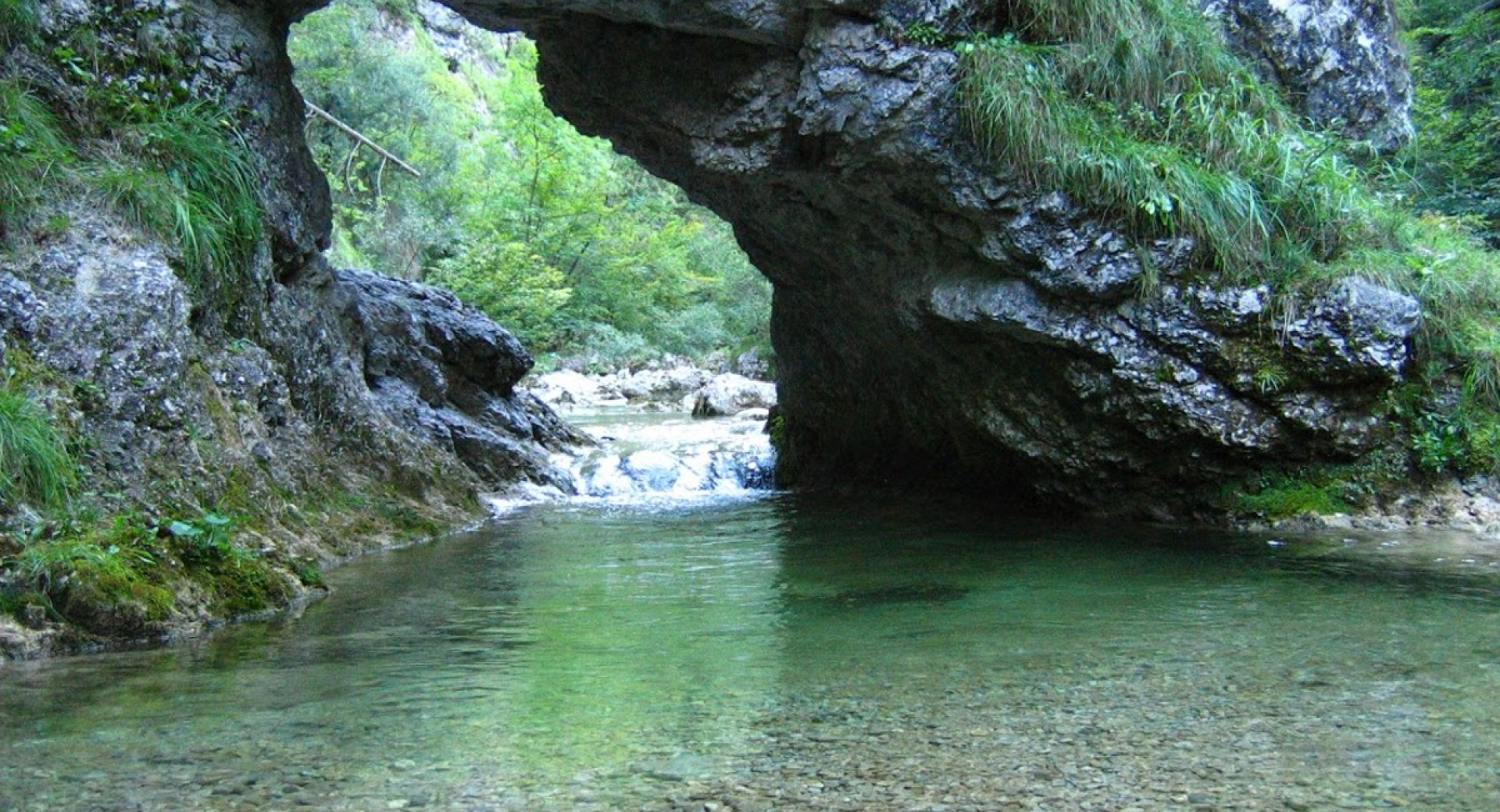
What should we call them? The hidden-er gems? Disguised facets of the hidden gem that is Ljubljana? While we’re working on the metaphor, here are some places I like to recommend to friends, even Slovenes, who might not have explored them.
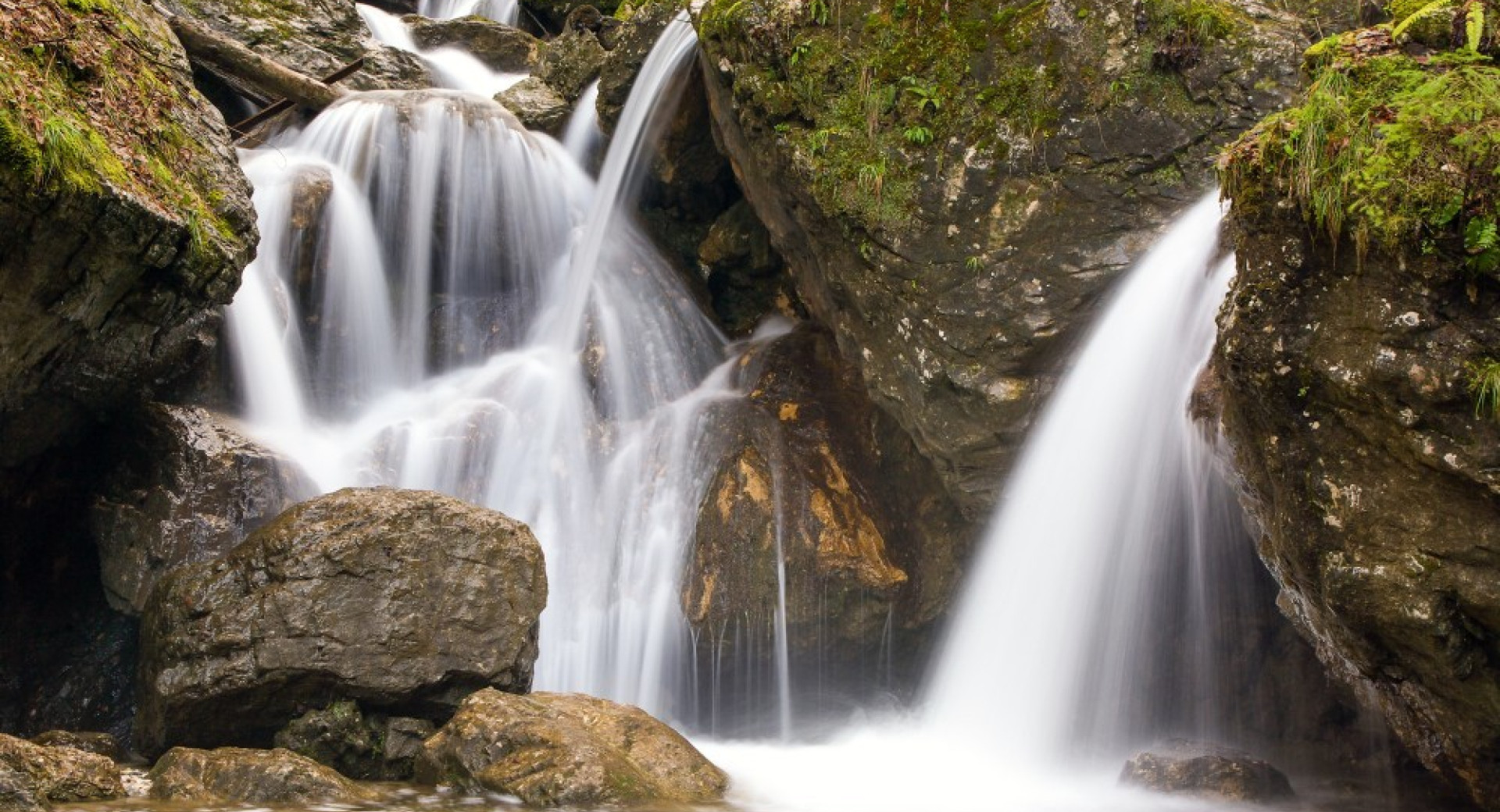
Pekel Gorge, foto Jože Pristavec © Jože Pristavec
Pekel Gorge
“Welcome to Hell” read the sign, a rough translation of course, but it boded well for our family hike. At the start there stood a painted wooden statue of the Devil lording it over the entrance to the gorge. We’d just driven through the friendlier-sounding town of Blueberry (Borovnica), which lulled me into a false sense of security. Turns out that the name is much scarier than the place itself. Pekel Gorge is actually a lovely day hike which takes you past seven waterfalls, some as short as three meters tall, one as high as 29 meters. The sign at the entrance, carved into a tree trunk, mentions that the walk takes you past five waterfalls, but I counted seven, so maybe we got two as a free bonus?
I asked some locals where this imposing name comes from, receiving the rather mundane answer that it’s because the gorge is a creepy, gloomy place in winter. But this was a bright summer’s day, so no sign of devils anywhere. We climbed past a canine-shaped rock called Devil’s Tooth (Hudičev zob), but that was the only devilish thing we spotted.
This, I would say, is a hike of moderate difficulty—there are some parts that you need to access using iron ladders fixed to the rocks, so it’s not recommended for small children, but is a great day trip for adults. While it’s too slippery to hike in the winter, if you’re into ice climbing, the frozen waterfalls here are the place to do it. And to warm up afterwards, stop for a drink and a strudel at Gostišče Pekel: Hell Inn. Make it a blueberry schnapps (borovničevec) in honor of the fact that you’ll have to drive past Blueberry to return to Ljubljana.
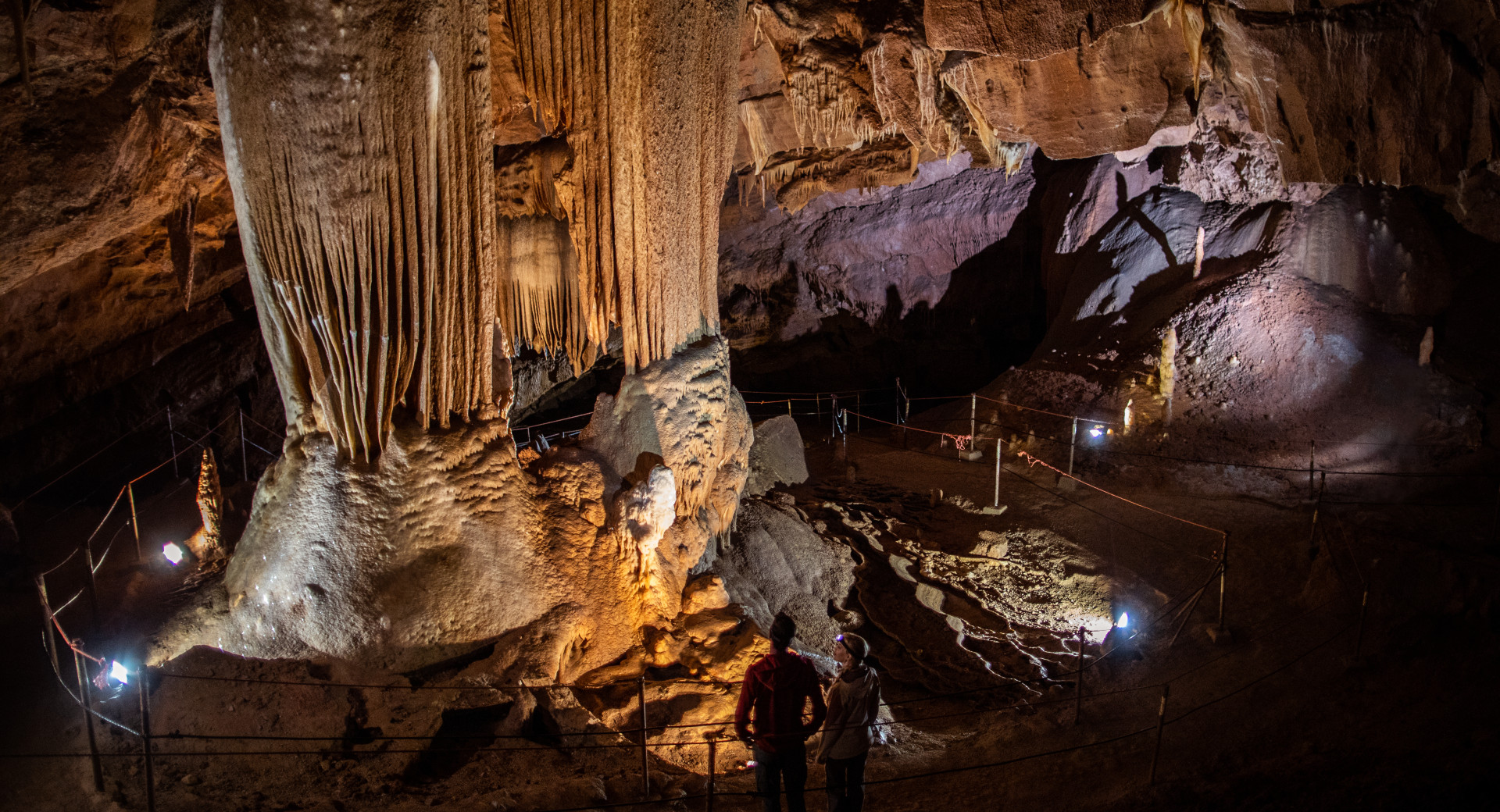
Mayor's Cave, foto: Staderzen
Mayor’s Cave (Županova jama)
Not far from Hell, is Mayor’s Cave, a spectacular site discovered in 1926 by—you guessed it— the mayor at the time, Josip Perme. The cave was used for ice storage for ages, but only one chamber was known until Josip spelunked his way deeper, finding a further six chambers. The karst cave has been explored to a depth of 122 meters and is 330 meters long. But to reach the cave at all, you must set off down 428 stairs, followed by a 600-meter-long corridor. Much of Slovenia sits upon a bed of karst (limestone), a porous stone prone to subterranean cave systems. Over the millennia, water erodes the stone and leaves it honeycombed with caverns of varying sizes. The most famous colossal caves are Postojna and Škocjan, but both are far more visited than the quiet Mayor’s Cave, which you may very well have to yourself—but you’ll need to take a guided tour, for safety. For times, please visit the cave’s website.
Ig Gorge, foto: Zupanc
Ig Gorge (Iški Vintgar)
Slovenia is GORGEous. See what I did there? I actually stole that pun from Ithaca, New York. Back in the US, the town of Ithaca (most famous as home to Cornell University), is known for beautiful gorges, and some clever advertising exec no doubt won a Christmas bonus by coming up with the “Ithaca is GORGEous” slogan. Well, Slovenia is even more GORGEous. So there.
I briefly lived in the town with the cutest name I’ve ever heard—a candidate for the cutest settlement name on Planet Earth—Ig. Ig sounds like a loveable animal character who makes beeping noises in a Star Wars movie, but it’s actually the name of a town just across the marshes from Ljubljana. And near to it is a gorge, “vintgar” in Slovenian, along the Iška River.
Describing a walk along a gorge is not the most rewarding task for a writer. Let me assure you that it’s lovely. You can spot many alpine plants, some of them exotic, like two flower violet, spring snowflake, and the indigenous Carniolan primrose. An hour’s hike will take you to one of several secret Partisan hospitals that were built in Slovenian forests during the Second World War, to care for the wounded Yugoslav Partisans who successfully drove the Nazis out of the region. This one was set up in April of 1942, and was restored in 1966. What a cool thing to be on a walk in the woods and stumble upon a piece of living history.
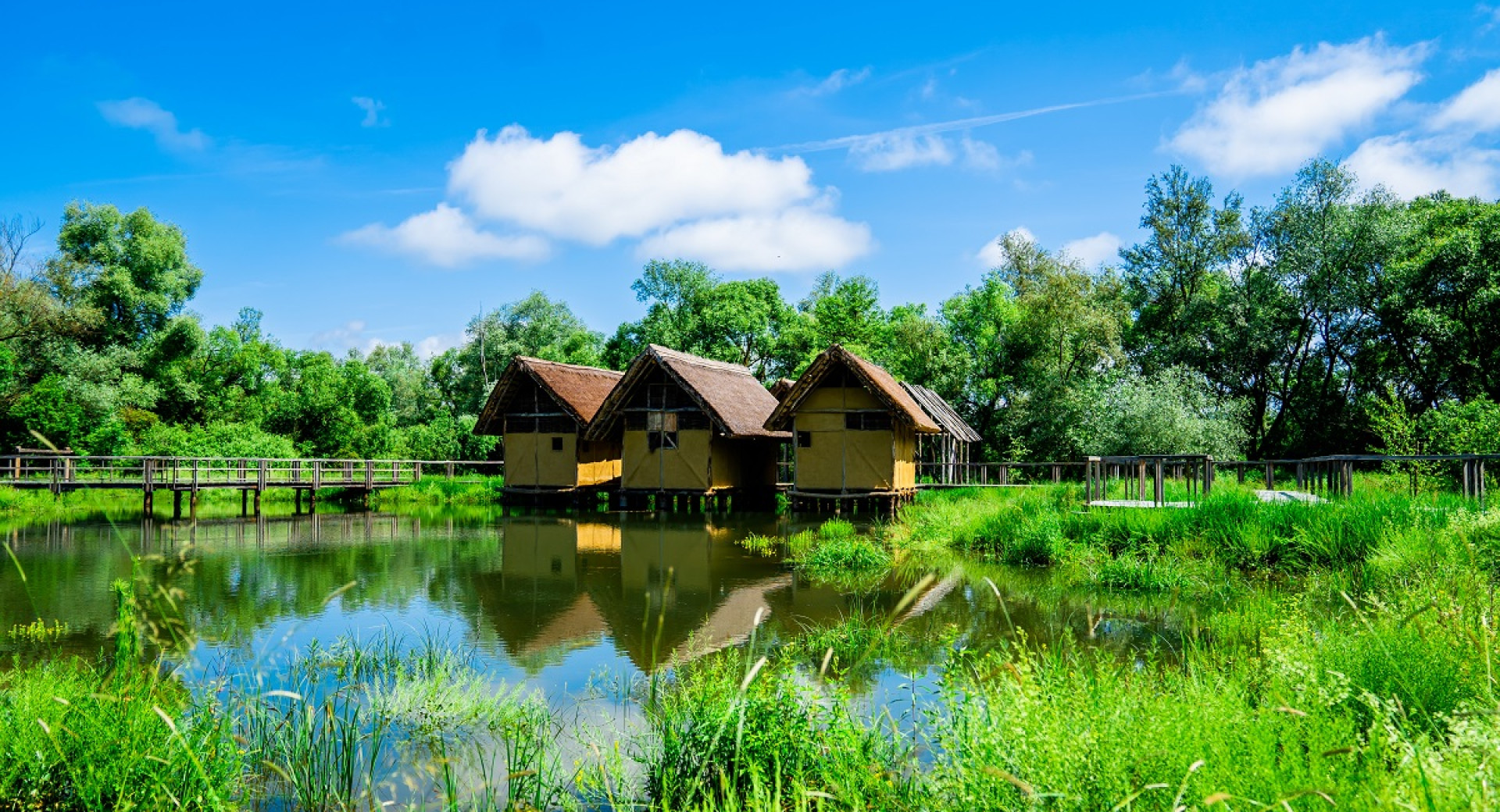
Morostig, foto: Sašo Švigelj
Morostig House
On the other side of Ig, you’ll find Morostig House, a series of pile-dwellings standing above the still waters of the Ljubljana Marshes.
Slovenia's pile dwellers were prehistoric communities that thrived around the country's numerous lakes and rivers during the Neolithic and Bronze Ages, from around 4000 to 1000 BC. These ancient settlers built their homes on stilts above the water, a practice that allowed them to adapt to the challenges of their environment. These pile dwellings provided protection from flooding, easy access to water, and some defense against predators or hostile neighbors. Archaeological discoveries in locations like the Ljubljana Marshes have unveiled valuable insights into the daily lives, technologies, and trade networks of these early Slovenian societies. The place most-associated with the ancient pile-dwellers is Ig and the Ljubljana Marshes, where we find Morostig House.
There, elevated walkways, likewise built on pylons driven into the marsh floor, allow you to walk a loop at water level, admiring five huts built in the manner of the prehistoric inhabitants of this marsh. You’ll also find a drevak boat, a wooden dugout made of two trees and with a flat bottom, allowing the driver to stand in comfortable balance. These boats were propelled by pushing a wooden pole against the marsh floor. I know from experience that, when driving such boats, you must be sure to twist as you pull up on wooden pole, as the mud sucks it in and can result in the boater getting stuck. I learned this lesson while a student “punting” on similar boats on the River Cam in Cambridge—I once accidentally held onto the pole while the boat continued forward, so I was left, dangling from the pole, above the water.
There is also a long, elevated walkway you can traverse, dotted with points of interest, that winds across the marshes. In 2011, the original archaeological remains of the pile dwellings at Ig were added to the UNESCO World Heritage List. Thanks to the walkways, you can explore this rich natural and archaeological zone without getting your feet wet.
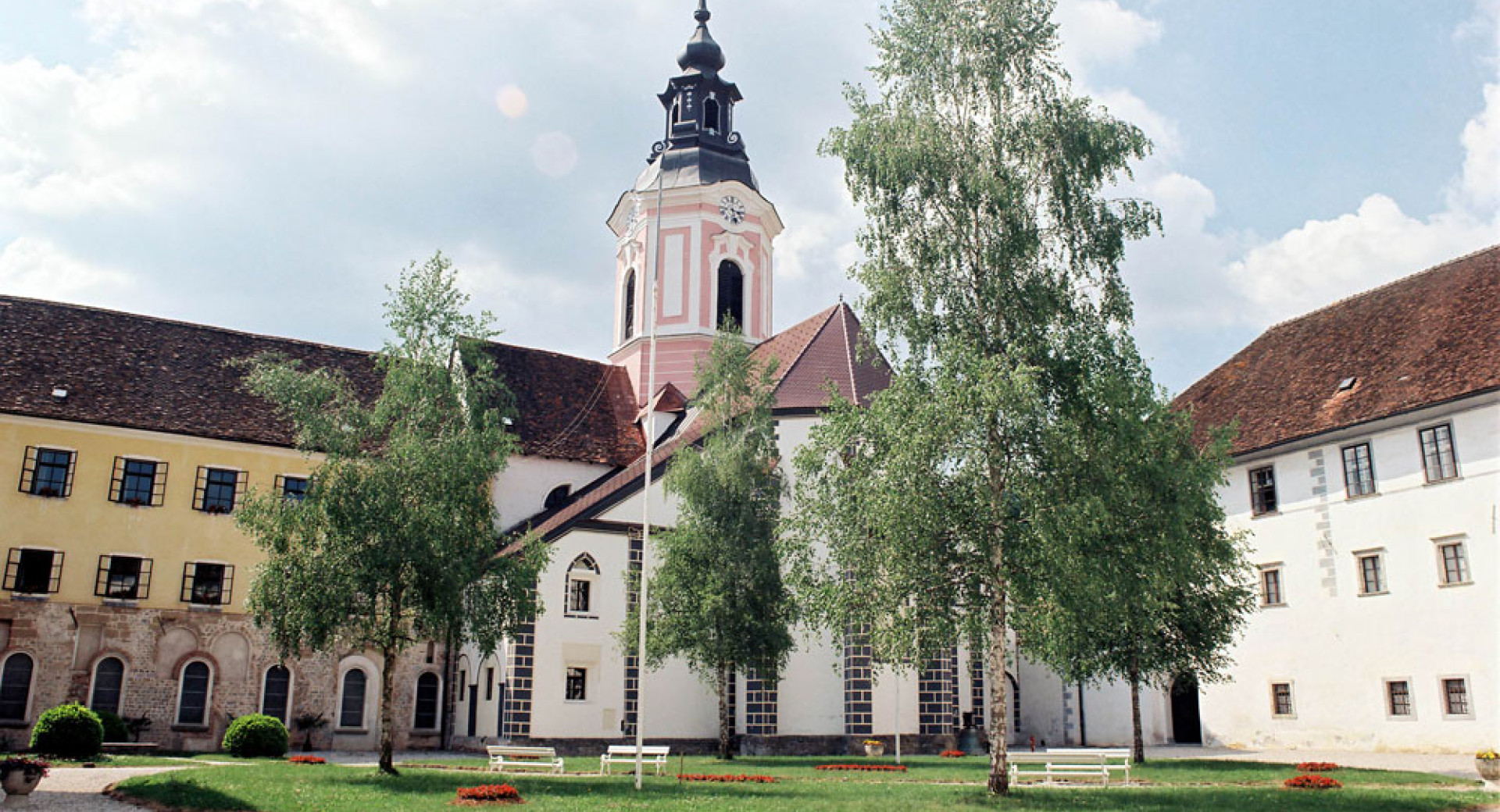
Stična Monastery, archive Stična Monastery
Stična Monastery
After all of this healthy nature, a manmade wonder might feel refreshing. How about a trip to Slovenia’s most important monastery, one which is open to the public?
Founded in 1136 by Peregin I, the patriarch of Aquilea, Stična Monastery has endured centuries of tumultuous history: over the years it has weathered fires, wars, and political changes—including the abolishment of monasteries during the Enlightenment and Socialism’s peripheralization of organized religion. But it still stands strong, and is still run by Cistercian monks, the same order that established it.
The monastery is striking and noble, with Romanesque and Gothic elements around a tranquil cloister garden, with its manicured hedges and colorful blooms. It houses a rich cultural and historical heritage, with its extensive library and a museum—the Slovenian Museum of Religion—displaying religious artifacts, manuscripts, and artwork. These collections provide a glimpse into the spiritual and intellectual life of the monks who resided there over the centuries.
It's home to the so-called Stična Manuscripts, a collection of medieval manuscripts that date to the 12th and 13th centuries. They include liturgical, theological, and philosophical works, along with historical chronicles and legal documents. They are unusual for their linguistic diversity. While most of the texts are in Latin, some sections are written in Old Church Slavonic, and there are even traces of the Old Slovene language. This multilingualism reflects the interconnectedness of medieval Europe and the importance of Stična as a center of learning and culture.
The monastery continues to be a functioning religious center, and its doors are open to visitors seeking a glimpse into Slovenia's spiritual and historical past. Pilgrims, history enthusiasts, and tourists alike can immerse themselves in the beauty, tranquility, and historical richness of Stična Monastery. If you take a guided tour, you can see some fun off-the-beaten-path aspects, like the belfry (which indeed contains bats, as the idiomatic phrase “bats in your belfry” suggests), as well as a recent discovery of a skeleton beneath the stone floor of a storage room.
One of the highlights is a visit to the gift shop. This might sound odd, for a monastery, but Stična keeps up a rich tradition of homemade products produced by monasteries, many of them healthful. There is a line of teas, herbal schnapps, soaps, tinctures, and more, many from recipes handed down by a particularly beloved monk, Father Simon Ašič, who was a renowned herbalist, healing those who came to the monastery. His branded teas, honey, and apple cider vinegar can be bought in supermarkets, but this is their home base. All purchases support the monastery, and your wellbeing, so they make an ideal souvenir or gift.
In Ljubljana, you’re so close to so many fascinating day trips that you might consider extending your stay! From nature to manmade monuments, Ljubljana is the perfect base from which to explore central Slovenia.
Ta blog je na voljo tudi kot podcast, kjer lahko uživate v poslušanju Noahovega očarljivega ameriškega naglasa.

